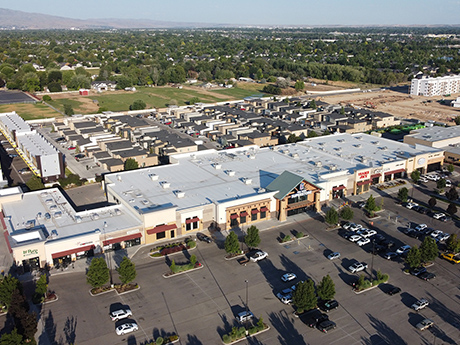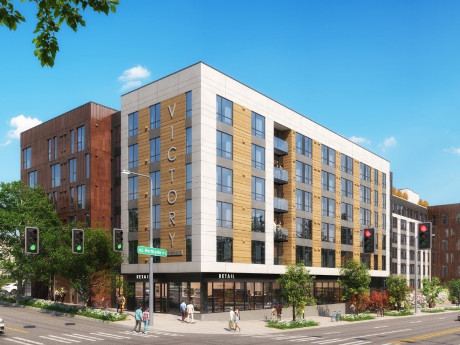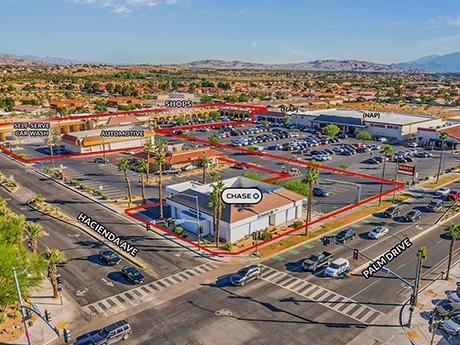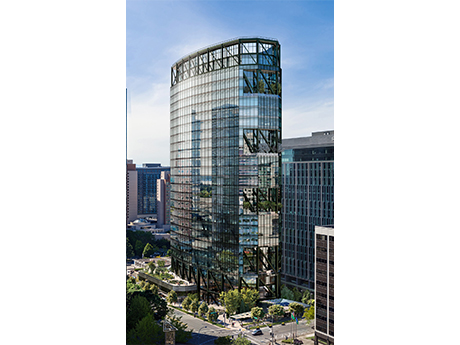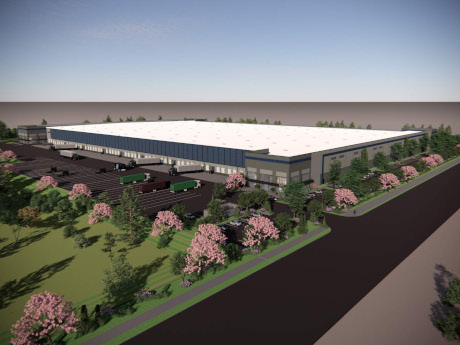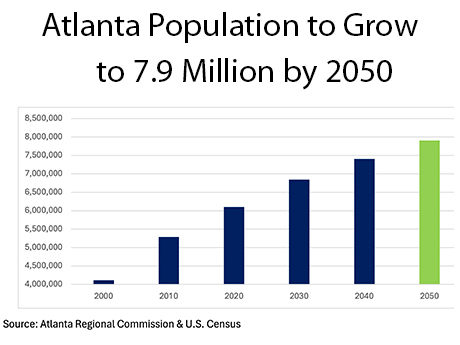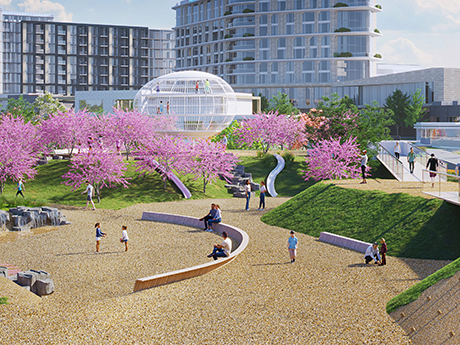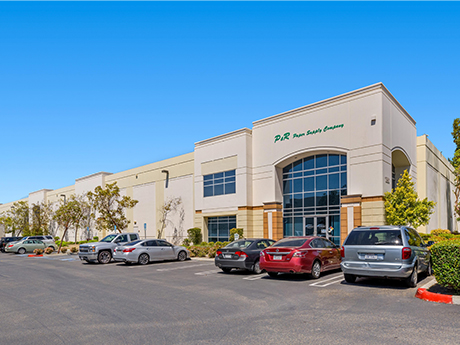— By Holly Chetwood, Retail Specialist, TOK Commercial — The Boise MSA retail market had one of its strongest quarters on record with net absorption reaching 559,000 square feet at the end of March of this year. Multiple big-box spaces were backfilled in the first 90 days of the year including the former K-Mart and Gordmans spaces in Nampa as well as both Bed, Bath, and Beyond locations in Boise and Meridian. In addition, the highly anticipated Scheels opened its first Idaho store at Ten Mile and I-84 in Meridian. Along with a healthy level of net absorption, nearly 100 transactions were recorded, the highest number of deals seen in a quarter since 2021. The top five deals of the quarter were all over 25,000 square feet, however, leasing activity continues to be primarily driven by tenants in spaces below 2,000 square feet. These deals have accounted for 52 percent of transactions over the past 12 months. As demand stayed high, vacancy continued to tighten throughout the first 3 months of the year. Total vacancy ended the quarter at 4.4 percent, its lowest level in nearly a year. The majority of submarkets are seeing vacancy remain between 2 to 4 percent. …
Market Reports
— By Candice Chevaillier, CCIM, Principal, Lee & Associates | Pacific Northwest Multifamily Team — Absorption still lags supply in the Seattle MSA contributing to higher vacancy and flat rents. In Q1 2024 3,000 units were delivered, yet only 2,800 were absorbed. Vacancy is stabilizing at 6.9 percent this quarter and then is expected to trend down starting in Q3, finally allowing meaningful growth in rents. Construction costs remain high and options for financing limited, curtailing new development. This is creating demand for existing value-add acquisitions. 2024 and 2023 sale volume in the Seattle MSA is still a trickle of what it was in 2022 and 2021, shifting Cap Rates slowly upwards. This trend is expected to be short-lived. As interest rates finally begin to fall, and rents begin to rise, investors who catch this inflection point will prevail from best pricing and benefit while more conservative capital sits on the sidelines.
— By Brad Umansky, President & Head Coach, Progressive Real Estate Partners — Occupancy and lease rates have continued to trend higher throughout Southern California’s Inland Empire retail market as a lack of new construction combined with strong retail demand has kept vacancies near record lows. Looking ahead, factors affecting the market are 99 Cent Only’s bankruptcy, the substantial slowdown in sales activity, and the minimum wage increase to $20/hour for fast food workers. Occupancy & Lease Rates Occupancy is currently reported at 94.3% by Costar, but removing spaces 10,000 SF or larger, results in occupancy of 97.2% which demonstrates the lack of available shop space. In my 30+ years of working in this market, I have never seen such a lack of options for shop tenants. As a result, when shop spaces become available owners are mostly commanding a higher lease rate than what the previous tenant was paying. 99 Cent Only Bankruptcy Dominates Recent Activity Since April, when 99 Cent Only declared bankruptcy and promptly decided to liquidate all 371 stores in the chain, industry participants have been analyzing these locations. As of June 2nd, it has been determined that Dollar Tree is acquiring 170 of the …
— By Alex Muir, Senior Vice President, Lee & Associates | Seattle — As we near the halfway mark of 2024, capital markets activity in Seattle remains slow. The year has largely consisted of price discovery and waiting for interest rates to drop. With that said, the sales volume for office assets has nearly surpassed the 2023 total. Four transactions over $30 million have occurred year-to-date, all of which are larger than any deal last year. These sales are emblematic of the type of deals that are driving investment activity, with three being owner-user acquisitions — Alaska Airlines, Costco, Seattle Housing Authority — and the fourth involving a loan assumption. Distressed sales are occurring more frequently as well, with several buildings in downtown Seattle trading below $150/SF. While it has yet to materially impact vacancy, there are signs of life in the leasing market. Pokémon recently signed a lease for 16 floors in The Eight, an under-construction tower in the Bellevue CBD. This is the largest lease in the market in three years. Other tenants, such as ByteDance and Snowflake, have signed leases larger than 100,000 SF, as a new wave of tech companies grow in the market. With the …
By Charlie Adams and Walker Adams of NAI Brannen Goddard Industrial real estate in Atlanta is in limbo as of the second quarter of 2024. Certain submarkets in Atlanta have been overbuilt and tenant demand with historically active users (third-party logistics, wholesale, e-commerce, etc.) has decreased in comparison to what was seen over the last four years. As a result of the space grab during COVID-19, many logistics tenants are sitting on excess inventory within their buildings. Consumer demand has cooled, increased interest rates have dampened the economy as a whole and rents have risen 14.5 percent year-over-year, according to CBRE’s most recent report. The impact of these headwinds for traditional industrial (warehouse and distribution) real estate is positive. Developers haven’t had the fundamentals allowing overbuilding to a point of hyper-supply. Industrial construction starts have been few and far between over the past 12 months, and we believe this lack of new supply will keep Atlanta’s fundamentals healthy through this limbo we’re currently experiencing. With 4 million square feet of net absorption in first-quarter 2024 and 15.9 million square feet under construction, we should see 2025 vacancy in line with current vacancy, assuming absorption continues at a similar pace. Therefore, …
— By Vanessa Herzog, SIOR, CCIM, Principal, Lee & Associates | Seattle — Industrial markets in the Pacific NW are adjusting to new parameters but remaining steady. Vacancy rates are hovering around 7% in the 6-county region along the I-5 corridor (Arlington to Vancouver, WA). Leasing activity slowed in the first quarter but started picking up as we progress through the second quarter. New construction is active with permitted projects, but the regional project pipeline is diminishing, not due to demand, but due to high land price expectation, stabilized rental rates and continued high costs of new construction. We think this trend will continue well into 2025 leaving Developers and Land Sellers frustrated. Regionally, large land parcels are difficult to find or assemble, leaving Developers looking at infill assemblages, land use changes or full site redevelopment. IOS specialized properties are slowing in demand from Tenants. Finally, we are seeing the small owner user facilities for sale or lease, and the demand from this user group level off. Here are some statistics: Total Inventory at 398M SF, Current Vacancy rate 7% (27.8M SF), Market Asking Rates $1.12/SF/Mo., Sublease Space 20% of total vacancy (5.6 M/SF): New Construction underway 9.9M SF. Demand …
By Will Mathews and Mike Kidd of Colliers What is the reason behind Atlanta’s explosive growth over the last 20 to 30 years? Simply put, it’s been the exponential increase in population driven by an influx of new residents from the Northeast, Midwest and Mid-Atlantic. Atlanta is home to 17 Fortune 500 companies (the third-largest market in the nation), numerous high-paying jobs, a culturally diverse population and multiple prestigious universities, laying a strong foundation for incredible net migration. Multifamily investors are drawn to Atlanta, evidenced by the region’s high volume of multifamily transactions. According to MSCI Real Capital Analytics, Atlanta is currently ranked No. 4 in the country behind New York City, Dallas and Los Angeles in transactions. Despite challenges related to new supply and systematic traffic problems, the future of Atlanta’s multifamily market is very bright for a number of reasons. 7.9 Million by 2050 According to the Atlanta Regional Commission, the population of Atlanta will grow to 7.9 million, or an increase of 1.8 million people from 2020 to 2050. One of the direct beneficiaries of population growth is multifamily rent growth. Reflecting recent population trends, rent growth is forecasted to peak in the suburban counties east of …
By Taylor Williams If you build it, they will come — assuming “it” is equipped with the all the facilities, necessities and conveniences of 21st-century living. As residents and consumers, it is remarkably easy to overlook the critical pieces of infrastructure that enable these necessities and conveniences. From the perspective of end users, these facilities and systems are not instrumental to the success of commercial and residential developments because they are taken for granted as minimal requirements for occupancy. Further, in many cases, the infrastructure is not visible to the naked eye. Yet for developers, particularly those in high-growth regions like North Texas, infrastructure is anything but an afterthought. “In the eyes of developers, infrastructure is a primary aspect of any project,” says Jack Turnage, development manager at Wildcatter Realty Partners, the developer behind The Greenbelt, a 325-acre mixed-use project in Hunt County. “Without that, the only way to navigate our site is on horseback.” Located in Greenville on the northeastern outskirts of Dallas, The Greenbelt is one of numerous large-scale mixed-use projects sprouting up in the region. Plans call for close to 1,000 single-family and multifamily units; several hundred thousand square feet of commercial space; numerous restaurant pad sites; …
— By Mark Lewkowitz, Executive Vice President, Colliers — The current interest rate environment has seemingly slowed the investment sales volume down, but strength remains with user sales. Over the last two years, users were more frequently being outbid for industrial properties (partially stabilized and vacant). Now, with the investment herd very thin, it has allowed users and buyers to take a crack at the opportunities. The users face the same hurdles where the cost of capital is not cheap, but it is more palatable when their business pays the mortgage or rent. I anticipate vacancies ticking up through Q4 2024, but beginning in Q1 2025, I feel confident we will see transaction frequency rise. In turn, the vacancy rate will lead to a softening of rental rates and increased concessions, but the fundamentals are strong for the industrial market, and it will turn on a dime in Q1 2025. Majestic Sunroad continues progressing significantly with the Landmark at Otay projects, delivering roughly 845,000 square feet by Q4 2024. Their projects are significant because they are among the first with 36’ clearance heights and trailer parking, something the market has not seen. Phelan Development has also introduced some incredibly functional 32’ warehouse …
— By Travis Marc, vice president, and Landes Magliarditi, first vice president, CBRE — The post-pandemic world has reshaped office space needs, and Southern Nevada is no exception. Economic uncertainty and evolving return-to-work policies are driving a market transformation that will define 2024 activity. Fueled by flexible work schedules, the digital age has fundamentally transformed how office tenants work and remain efficient. This shift in work styles is impacting the office market, and we are closely monitoring these trends to determine if pandemic-era changes will remain the future of office, or if new shifts arise to further define the future of office space. Nevada’s Enduring Strengths, Challenges Nevada’s strong economy continues to attract businesses, with sports and entertainment options fueling the growth. Live-work-play office concepts attract high-quality tenants as they, in turn, look to recruit high-quality talent. This development philosophy in Southern Nevada aims to create vibrant communities with seamless transitions between work, life and leisure activities, resulting in record rental rates. At the same time, rising interest rates and construction costs are slowing the overall development of new office. As a result, tenants have limited options to secure quality office space in newly constructed buildings. Well-located, second-generation suburban office space …


